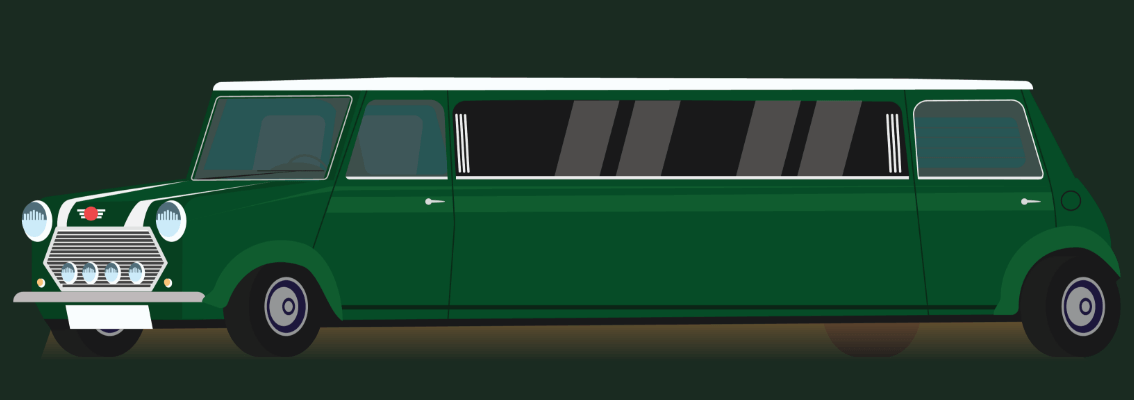The Burrow

There are many reasons why we modify our cars. Maybe we want to stand out, join in a cultural practice, improve vehicle performance or help the car go off-road. Sometimes we modify cars to personalise them, creating something that’s uniquely our own.
However, if you plan to modify your car in any way, whether it be extreme or minor alterations, you should keep in mind how it might affect your car insurance policy.
As experts in car insurance, we know that some insurers won’t provide cover for cars that have been drastically modified. If you are looking to make any changes, we recommend first checking your Product Disclosure Statement (PDS) to understand the inclusions and restrictions that are specific to your policy and how they could affect you.
Once you make changes to your vehicle, you should also be sure to let your insurer know so that they can update your policy and talk to you about changes to your coverage if required. If you fail to do so and try to make a claim further down the track, you could find that your claim may be declined or your policy is invalid due to failure to disclose information about the vehicle.
With that in mind, we were interested in seeing what some of the most extreme car alterations look like, to see just how far some people push the limits of a road-legal vehicle. We’ve explored examples of crazy yet legal car modifications in 10 countries around the world. We’ve chosen some interesting scenarios to modify a car’s design as much as we can – based on the laws of each different country. Our concepts also pay homage to famous vehicle modifying subcultures in these countries.
When we look at what constitutes an extreme modification, we’re looking at cars that have been heavily altered compared to the way they left the factory. Some of the modifications themselves are also pretty extreme and have huge impacts on what the car can do.
Read on to discover some of the crazy allowances that exist around the world – but remember, if you are looking to replicate some of these designs, don’t assume you will still be covered by your insurer!

You can’t have a list of extreme car modifications around the world without including Japan. The island nation is famous for its car scene, including various vehicle modification subcultures, a couple of which we’ll examine here; Bōsōzoku and Dekotora.
Bōsōzoku translates to ‘running out of control tribe’ and this style of car modification has its origins in youth bikie gangs that formed in the 50s.1 While it started with motorbikes, those wanting to embrace the Bōsōzoku method of vehicle modification turned their attention to cars.
Modifications common to Bōsōzoku style cars include:
Perhaps unsurprisingly, car modifications that have their roots in illegal motorcycle gangs may not be roadworthy. For example, in Japan extreme body modifications that increase the car’s dimensions can lead to the car failing an inspection.3
We’re going to have to pare back the crazy exhausts, front splitter and wheel arches in our concept design to keep it legal in Japan, but we’ll still keep the spoiler, exterior oil cooler and a touch of Bōsōzoku bodywork.
Of course, Bōsōzoku isn’t the only vehicle-tuning subculture in Japan. Another style of note is Dekotora.
Dekotora refers to ‘decorator trucks’, which are often decked-out with:
There are special rules and permits for Dekotora trucks when used at special events. However, regular road vehicles (including modified ones) have to obey the following rules when driving on Japan’s roads and highways:
To comply, our concept design has light blue decoration lights across the body panels. We’ve still kept a bit of the punk-rock flair of Bōsōzoku and combined it with the sci-fi vibes of Dekotora.

In the South American nation of Brazil, any changes to the factory finish require approval from the Departamento de Trânsito (Department of Transport, or DETRAN).6
While some updates, like changing the colour of the vehicle, simply involve notifying the state licence department, the following modifications need to pass an inspection by an accredited vehicle inspector:
This may feel restrictive, but it’s still possible to have a heavily modified ride.
A popular car modification style in Brazil is that of the ‘lowrider.’ Lowrider cars typically have the suspension springs and coils cut and re-welded or replaced so the car can sit lower to the ground. Often, hydraulics are installed to allow the car to rise or ‘bounce’ up and down or lean on an angle – a style of car modification which is particularly popular in the city of Sao Paolo.8
To keep the vehicle design street legal, some hydraulic suspension has been added to allow the car to rise up and down, but nothing too crazy.
Our conceptual design also includes a large spoiler (more for style than any aerodynamic improvement), fancy seats, metallic paintjob and a sweet entertainment system. The bodywork has also been altered in the lowrider style with long, smooth rounded panels – this will add a little aerodynamic improvement to the car, plus some visual flair.
There is also some work we’ve got going on under the hood, such as an air intake filter to bring cooler air into the engine and a turbocharger to boost air pressure for increased power and engine efficiency.
All of these changes will need to pass inspection and meet the safety standards set in Brazil’s Traffic Code.9

The picturesque nation of Canada regulates all car modifications to pass inspection, though specific laws differ between provinces. It’s still possible for a car enthusiast to modify their ride legally if they want to make some alterations.
Many of these legal car modifications focus around helping the car get through inclement weather such as snow, with lifted suspension and additional lights.
For example, in the province of British Columbia, in addition to the car’s basic headlights you can add:
Any additional lights must be spaced apart in accordance with British Columbian regulations, and off-road lamps will need to be concealed with an opaque cover when driving on the highway.
In the province of Quebec, you can replace the headlights with brighter xenon lights (also known as high-intensity diode lights or HIDs)11 and install LED lightbars for off-road driving.12
Furthermore, in Quebec, you can raise the car’s suspension so that the car’s height is increased by a maximum of 6.4 centimetres (2.5 inches), and you can add bigger tyres – so long as the increase in diameter is no greater than 7.6 centimetres compared with the original tyre diameter. For cars, the maximum wheel diameter allowed is 89 centimetres (35 inches).13
There is some additional work that’s permitted too, which we’ve included in our modified concept car designed to brave Canadian snowstorms:

Have you ever seen a stretch limousine and thought, ‘That’s pretty fancy. I wonder if I could turn my car into one?’
Well, in the United Kingdom (UK) you can create a home-made limo.
According to UK law, a wheeled motor vehicle can reach 12 metres in length.14 The trick will be getting it registered.
While a vehicle can be heavily altered, including its shape and length, anything which affects the vehicle’s handling, performance, structural integrity and stability must fit the UK’s regulations.15
This includes the chassis, axle and suspension.
Other regulations include ensuring the rear overhang (the distance between the back of the car and the rear axle) is less than 60% of the distance between the front and rear axle.
To make this home-made limo even fancier, we’ll add other modifications including under-glow neon lights – a coloured light that sits under the body of the car to add a ‘glow’ on the road underneath the vehicle.
To make it conform to UK law, we’ll need to meet the following requirements:
Lastly, on the inside, we’ll add a fancy entertainment system with a screen in the back for passengers. Any video in view of the driver is illegal,18 but the passengers far in the back can stream Netflix while the driver transports them to their destination.

For a long time, Pakistan has had very lax regulations when it came to car modification. However, that’s all about to change, because the nation (as of 2020) is in the process of implementing a new road safety act.19
In these new changes, anyone who has a heavily modified vehicle will need to report the alteration for inspection so it can be registered.
However, there is a style of vehicle modification that’s been popular in Pakistan and surrounding nations for decades that doesn’t alter the vehicle’s handling or performance.
Since the 1920s, when Pakistan received imported Bedford trucks from Britain, truck drivers in the region have been customising them and adorning them.
Known as ‘jingle trucks’, these vehicles are decked out with:
Other common modifications to these trucks include increasing the vertical height of the transport bed on its back with higher walls and additional layers. These walls allow room to transport more goods – and also provide more room for decoration.21
We’ve decorated an everyday passenger vehicle to look like a jingle truck, creating a set of wheels with distinct cultural flair.

Car modification laws in the United States of America vary by state, and in a country as big as America, there is a lot of room for variation. What if we wanted to ensure our car had some pretty ‘out there’ looks and got noticed?
Changing the paint job can have a profound effect on the overall look of a vehicle, but sometimes it can be hard to pick the right colour. Fortunately, you don’t always have to make a choice.
Iridescent paint means that the car will exhibit multiple colours depending on the angle by which it’s viewed at. The state of Virginia refers to this as a ‘prism effect’ but does note that this can’t be applied to windscreens.22
We can tint the windscreen however for some extra style, though the amount that the window can be tinted by, and what colour it can be tinted by will also differ between states.
As an example, in Alabama:
In contrast, Oregon, doesn’t allow red, gold, yellow, black or amber window tints.24
Given that many US states do not allow red, yellow, black or amber window tints, our concept design has a touch of blue.
To add even more colour, we can add some swanky gold alloy rims on the wheels, and have some neon lights – though laws on neon lights will also differ by state. For example, the state of Connecticut notes that neon lights can only be white, yellow, amber or red – so long as they pass the technical regulations.25 Furthermore, if we wanted to add neon hubcaps or wheel covers on a car registered in Connecticut, the front wheels could only be white, amber or yellow, and the rear wheels could only be red.
Finishing touches to our swanky American ride include some bodywork, such as a spoiler on the back (that doesn’t block driver visibility), scissor doors (which lift and rotate vertically rather than swinging outwards) and changes to body panels. Generally, as noted by the Government of Maine, modified body panels are acceptable so long as they’re securely attached, not rusty and don’t pose a danger to pedestrians (i.e. any edges are smooth and blunt).26
With a flying buttress at the back, side air intakes, hood scooped and modified front and rear panels, we have one swish looking concept car.

Iceland is a beautiful place, but the weather and road conditions – particularly in winter with snow and sleet on gravel roads – can be tough on cars. The solution? Modify the cars to make them extra tough.
During winter months tyres can be studded for extra grip on the snow, with the number and size of the studs determined by the class of vehicle and the size of the tyre. The wheels can be increased in size by up to 44%,27 and it’s not uncommon for modified off-road vehicles having wheel diameters of 50 inches (a whopping 1.27 metres) or more!28
Legal car modifications in Iceland include:
There are custom made ‘super jeeps’ with six doors, three on each side, that can fit eight people. Icelandic vehicle modification company Ísar is working on their own super jeep prototype designed to travel across glaciers and snow.30
We’ll include those extra doors and seats in our concept design too, so we can bring more people along to experience Iceland’s jaw-dropping natural landscapes. This does mean that it might not fit in a regular home garage, and parking it in a shopping centre will be difficult.
Lastly, to help us see where we’re going during the snow, we’ll add some additional lights. The Iceland Ministry of Transport allows two LED lights to be added to the front of the car.31

The United Arab Emirates (UAE) is home to Dubai, one of the ‘most extra’ cities on the planet – which makes standing out a bit difficult.
Furthermore, in 2017 the UAE updated their road safety laws, with a focus on car modifications.33 Depending on the modification you wish to make to your car, you’ll need to request permission from the UAE licence department to get the car registered.
This makes car modification a bit more complicated. It’s still possible to modify your car to stand out, but what can you do in the UAE now they’ve updated their laws?
Modifications that don’t require governmental approval:
Modifications that do require governmental approval:
There’s a lot that can be done, so long as an application is submitted and alterations are kept within the scope of the law. For example, modifying the exhaust is allowed so long as it doesn’t affect the vehicle’s emissions or make the engine louder than 95 decibels.33
Following UAE guidelines, our concept design involves both modifications that don’t need written approval and some that do.
For example, scoop and hood modifications are allowed so long as they don’t affect driver visibility,34 and bodywork is allowed so long as edges on any grills, curves and body panels are blunted, so we’ll definitely have some cool upgrades to the bodywork.
Additionally, we’ll add a spoiler, neon under-glow lights, and some slick spinning chrome wheel rims (also known as floating rims, which turn independently of the wheels). While we could also give the car a new paint job, we could instead replace some of the body panels with carbon fibre (or at least make it look like carbon fibre with a body wrap).
Carbon fibre has a unique look thanks to how it’s made, but might not cut it if we want to show off in Dubai. However, it’s possible to have a marbled carbon fibre body – a particularly expensive and flashy bit of bodywork. This was shown off by Mansory Design & Holding GmbH on a modified Bugatti Chiron, dubbed the Mansory Centuria, at the 2020 Geneva International Motor Show.35
And, because we can, we’ll add some extra spotlights out the front, even though they don’t really go with the overall vibe of the car. But this is the UAE, and we want our design to stand out.

Switzerland is known for a few things: chocolate, skiing and its global banks. When it comes to extremely modified cars, however, Switzerland has a few tricks up its sleeve that allows motorists to turn their vehicle something that resembles a sci-fi machine.
While a number of modifications are fairly average, like the addition of fog lights, you can also add a projected Heads Up Display (HUD) speedometer that appears on the windscreen to help make your vehicle feel like the cockpit of a jet fighter.41
For some serious spy level car modification however, we’ll turn our concept car into an amphibious submersible that works on the road and the water, just like from the James Bond film The Spy Who Loved Me.
Swiss automotive builder and design studio Rinspeed, known for creative concept vehicles, heavily modified a Lotus Elise in 2008.
This intensive project included:
Known as the Rinspeed Squba, it’s a road-legal concept – drivers just need to connect up their own oxygen masks to the tanks so they don’t have to hold their breath when taking the car for a swim.
Our extremely modified car design has an electric engine, jets on the side so it can dive underwater, oxygen tanks on the inside, a projected HUD and additional fog lights on the front.

When it comes to car modifications in South Africa, standing out can invite trouble, and it might be better to blend in. According to the South African Police Service, the number of car-jackings is declining slightly, but there were still 16,026 reported cases from April 2018 to March 2019. 36 So how is it possible to have some extreme modifications on a car that looks like any other?
Well, adding a flamethrower is pretty extreme.
Back in the 90s, Charl Fourie invented a flamethrower to add to his BMW. It sat underneath the sides of the car, and when activated would shoot flames up vertically and at an angle to deter would-be hijackers. 37
The crazy part is that it’s a legal modification, if rare. Only a couple hundred were sold, as the high expense meant the product didn’t take off. 38
As for other legal car modifications, Arrive Alive, an initiative of South Africa’s Ministry of Transport notes that modifications that affect the look of your car are typically ok – so long as they don’t impact the vehicle’s handling or safety on the road. 40
Examples of these include:
Modifications like lowered suspension, a more powerful engine, modified differential or gearbox are more serious and may affect a car’s handling. These modifications might not pass a vehicle inspection.41
Our concept design includes a range of small mods to improve driver comfort, like a new sound system, some comfy chairs, tinted windows, off-road tyres so we can go on safari, and some modest flamethrowers.
Brought to you by Compare the Market: Making it easier for Australians to search for great deals on Car Insurance.